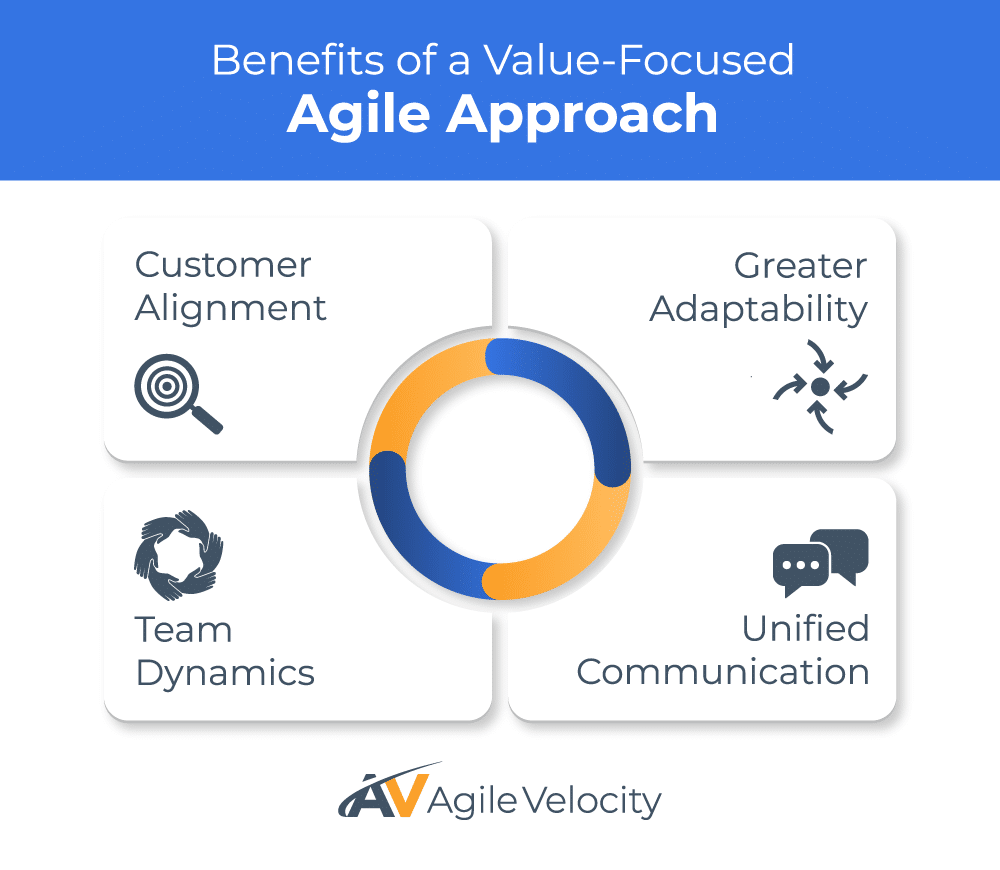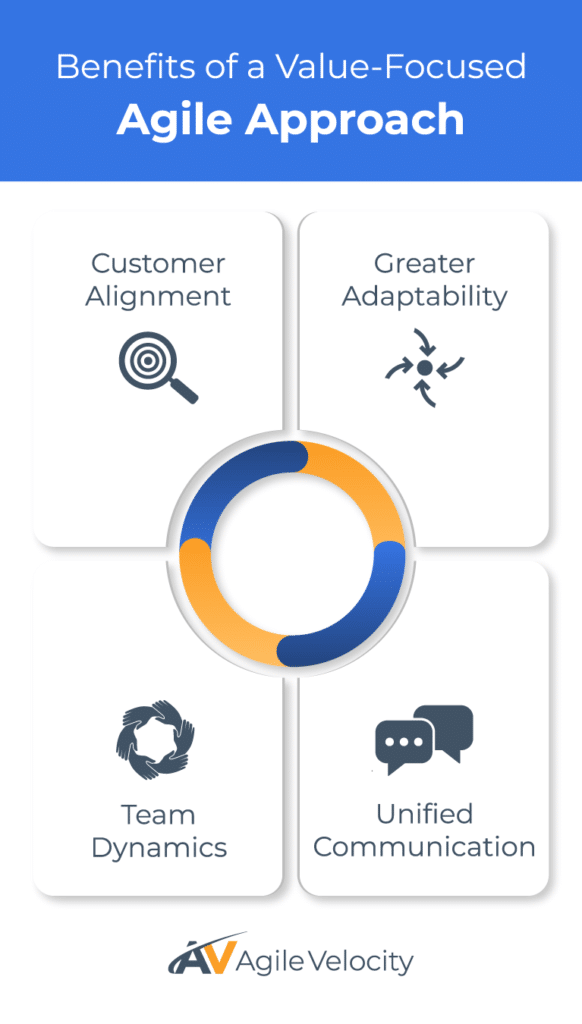Story point estimates have been a staple in Agile software development, used by teams—including Product Owners, Scrum Masters, and developers—to gauge the complexity, effort, and size of work. Initially, these estimates provide a useful method for aligning team expectations and promoting discussion around task challenges. However, as Agile practices mature, many organizations have begun to question whether these estimates truly drive value. Focusing on a metric like velocity—the number of story points completed in a Sprint—can sometimes distract teams from their ultimate goal: delivering measurable business and customer outcomes.
In today’s dynamic markets, teams are rethinking whether an over-reliance on story point estimates limits Agile’s true potential. Story point estimates benefit teams greatly when used correctly and when they’re not overly relied upon.
This article examines the common challenges of and misuse of story point estimation and proposes additional. value-driven approaches. We discuss why shifting from a point-centric view to one focused on meaningful outcomes can enhance organizational agility. In addition, we outline how tools such as the Path to Agility® Navigator help visualize improvement opportunities, track progress, and guide Agile Transformations so teams can consistently deliver real value.
Understanding Story Point Estimates
Story point estimates were introduced as a way to assess work without relying on exact time-based metrics. By focusing on factors such as complexity, effort, and risk, teams assign relative values—often using a modified Fibonacci sequence—to compare tasks. The goal is to stimulate discussion and create a shared understanding of the work ahead. In frameworks like Scrum, these estimates guide Sprint Planning, while in Kanban they help manage workflow efficiency.
For newer teams, story point estimates provide a structured approach to begin estimating and planning work. They drive collaboration by prompting conversations that clarify task scope and dependencies. Over time, however, the relative and subjective nature of these numbers can lead to inconsistencies. What one team member considers a “5” might be seen by another as a “3,” leading to misalignment. Moreover, story point estimates tend to capture effort rather than the value that a task brings to the customer or business.
Common Challenges with Story Point Estimation
While widely used in Agile practices, story point estimates can create challenges when misapplied or misunderstood, potentially steering teams away from what truly matters—delivering value.
Misalignment
One common pitfall is the misalignment between story points and actual business outcomes. Because story points measure effort and complexity, they don’t gauge whether a product or feature is impactful to users or aligned with organizational goals. As a result, teams may prioritize point completion over meaningful deliverables.
Subjectivity and Misinterpretation
Estimation is inherently subjective, and disagreements over point values can extend planning sessions with little added benefit. This subjectivity complicates comparisons across teams or larger initiatives, especially in environments that adopt frameworks like SAFe®.
Overemphasis on Velocity
Tracking velocity—the total story points completed per Sprint—can shift focus away from delivering actual business outcomes. Teams might feel pressured to adjust estimates to show improved metrics rather than concentrating on customer impact, quality, or technical excellence. Teams frequently (both intentionally and unintentionally) game the process during refinement, planning and sprint closeout in pursuit of “credit” for points. This does not serve any of the actual purposes of estimating using points and really degrades the value of their use.
Limited Reflection of Business Value
Story points measure effort and complexity, not the tangible benefits realized from the work. For example, a high-value customer feature might be simple to implement and receive a low estimate, while its impact on business outcomes is significant. Conversely, complex backend improvements may accrue higher points without necessarily enhancing user satisfaction.
Scaling Difficulties
When multiple teams use different scales and interpretations for story points, aggregating these numbers becomes problematic. Leadership may struggle to compare performance or align efforts across teams, potentially leading to miscommunication and misaligned priorities.
Why Teams Must Focus on Value Delivery in Agile Practices
To fully embrace Agile principles, teams must consider whether their metrics drive behaviors that support real customer and business value. Instead of primarily tracking story points, Agile practitioners are increasingly focusing on outcomes.
Prioritizing Meaningful Outcomes
Agile success should be measured by the ability to solve customer problems, improve user experiences, and achieve strategic objectives—not merely by accumulating points. During Sprint Reviews, it is valuable to assess delivered features based on how they reduce pain points or drive business results rather than on numerical progress alone.
Aligning Work with Business Goals
Effective planning should explicitly connect work items to organizational objectives. Asking questions such as “What customer problem does this solve?” or “How does this story contribute to our strategic vision?” fosters a value-centric approach. This mindset encourages teams to focus on the impact of their work rather than just the amount of work completed.
Collaborative Value Creation
Fostering a collaborative environment in which Product Owners, Scrum Masters, developers, and other stakeholders discuss and define value helps break down silos. In this model, metrics related to customer satisfaction and business outcomes become integral to planning sessions, ensuring that every team member is committed to delivering real, measurable change.
Additional Approaches to Measuring Progress

Using value-driven measuring methods does not mean abandoning story point estimating altogether. Instead, teams can adopt additional metrics that capture both workflow efficiency and ultimate business impact:
Flow-Based Metrics
Metrics like cycle time, lead time, and throughput provide direct insights into how work moves through the system. Cycle time measures how long it takes for a task to progress from start to completion, while lead time tracks the span from stakeholder request to delivery. These metrics help teams identify bottlenecks and continuously refine their processes.
Outcome-Oriented Indicators
Qualitative measures such as customer satisfaction scores, Net Promoter Scores (NPS), and post-release feedback offer valuable insights into whether the work delivers the desired impact. These indicators link team efforts directly to improvements in customer experience and overall business success.
Hypothesis-Driven Development
Rather than simply estimating work, teams can frame tasks as experiments anchored in testable hypotheses—for example, “We believe this feature will improve conversion rates.” By validating assumptions with real-world data, teams can pivot quickly if objectives are not met, ensuring that work remains aligned with true value delivery.
How Path to Agility Navigator Supports Value-Driven Processes
For organizations committed to Agile Transformation, having a clear roadmap is essential. The Path to Agility Navigator is a tool that enables enterprises to shift focus from tracking story point estimates to delivering measurable business outcomes.
Visualizing the Transformation Roadmap
Path to Agility Navigator provides a visual representation of the steps required to evolve business processes. By mapping out areas needing improvement—such as team alignment or Lean Portfolio Management—organizations gain clarity on where to concentrate their efforts.
Tracking Progress Through Outcomes
Instead of monitoring arbitrary point totals, Path to Agility Navigator emphasizes improvements in areas like time-to-market, customer satisfaction, and team morale. This outcome-based tracking approach offers a more accurate reflection of progress and aligns closely with overarching business goals.
Enabling Sustainable Growth
As organizations transition from traditional methods to value-focused strategies, Path to Agility Navigator offers actionable guidance that supports continuous improvement. It helps identify key areas for change, tracks measurable results over time, and empowers teams to build the self-sufficiency necessary for long-term agility.
Request a Demo
Practical Steps for Teams to Implement an Outcome-Driven Approach
Moving to an outcome-driven approach can be managed through a series of deliberate, incremental steps:
1. Define What Value Means
Leaders and teams need a clear definition of what “value” looks like in their context. Does it mean higher revenue, better user engagement, or improved efficiency? By agreeing on these goals upfront, everyone orients around a shared vision.
2. Reframe Planning Sessions
During Sprint Planning or backlog refinement, shift discussions from assigning points to understanding the customer impact of each task. Encourage conversations that explore how specific work items align with business outcomes. Assigning a point value to a story at the end of refinement is really just an indicator that the team understands why the work is valuable and that the scope is known.
3. Introduce Complementary Metrics
Begin tracking flow-based metrics like cycle time and lead time alongside traditional practices. Over time, emphasize these measures during reviews to ensure that work progress is evaluated based on its contribution to overall value, not just point totals.
4. Gradually Reduce Reliance on Points
Use story points minimally at first—possibly just for capacity planning—and keep the main conversation around desired results. Over time, you’ll see a natural shift from point-centric discussions to a broader focus on business impact.
5. Experiment with No-Estimate Sprints
Pilot phases without formal estimates to help teams concentrate on task completion and value delivery. By using Work In Progress (WIP) limits to manage capacity, teams can maintain focus while reducing time spent on detailed estimation.
6. Communicate the Change
Transparent communication with stakeholders is essential. Explain the benefits of the new approach—such as clearer alignment with business goals and more accurate progress tracking—and share early successes to build confidence in the shift.
7. Provide Training and Support
Shifting to a value-first approach can require new skills or a new mindset. Workshops, coaching sessions, and leadership support all help teams adjust. By explaining how to integrate value-driven metrics, organizations create an environment where teams feel confident adopting the new approach. Ensure that the people facilitating refinement and planning truly understand how sizing with points works and how those estimates will be used.
8. Track Real-World Impact
Encourage teams to connect their work directly to real-world effects, such as a decrease in customer service inquiries or increased user adoption. These metrics build a stronger case for shifting your measurement from “effort spent” to “value created.”
9. Reinforce continuous improvement
Regularly revisit and refine your processes. In retrospectives, discuss how shifting focus has affected team morale, collaboration, and delivery quality. Use that feedback to make ongoing adjustments.
10. Identify and Eliminate Antipatterns
- Credit for Points – as mentioned above, story points completed are not intended to measure team achievements, they help us understand team capacity so that realistic plans can be made in the future
- Weaponizing Velocity – managers often want to use points to compare team performance. Points and velocity are relevant only to the team making the estimate. As mentioned above, points are not a valid measure of team performance
- Points per Person – there are a number of formulas for how to calculate how many points a team should be able to complete based on how many are on the team. Don’t do this. Story points are a team unit, not an individual unit. Don’t use any of these techniques and if they are in use, break those teams of the habit.
Integrating Continuous Improvement and Feedback Loops
Transitioning away from over reliance on story points entails integrating continuous improvement practices and establishing robust feedback loops. Agile teams thrive when they routinely gather insights from their work processes. Regular retrospectives and feedback sessions allow teams to assess whether their alternative metrics effectively capture true value. These sessions should prioritize identifying both strengths and opportunities for improvement over merely focusing on numerical outputs.
Open dialogue about challenges and successes builds trust and keeps all team members engaged in the transformation. Teams might, for example, set aside time to reflect on unexpected hurdles or celebrate wins that traditional point systems might overlook. Incorporating customer and stakeholder feedback directly into planning drives a cycle of continuous refinement, ultimately fostering a resilient, high-performing team.
Enhancing Organizational Agility through Continuous Learning
A key element in the journey toward a more value-focused Agile approach is nurturing a culture of continuous learning and adaptability. Agile teams that emphasize iterative improvement not only refine their processes but also develop innovative ways to tackle emerging challenges. Regular training sessions, knowledge sharing forums, and retrospectives create an environment conducive to ongoing learning and process enhancement. Many teams report experiencing improved collaboration and faster adaptation to market trends. There is also some evidence suggesting these teams may be more proactive in managing technical and business challenges; however, this particular outcome requires further empirical support to be fully validated.
Additionally, organizations that invest in continuous learning often provide their teams with dedicated time and resources—through Agile workshops, certification programs, or internal coaching—to build their capabilities. These initiatives enhance individual skills and create a unified vision for organizational growth, contributing significantly to a resilient and adaptable business model.
Benefits of a Value-Focused Agile Approach
Shifting focus to outcomes in alignment with story point estimates offers a range of benefits that can enhance team performance alongside broader business results:


Enhanced Customer Alignment
By concentrating on outcomes rather than outputs, teams fortify their connection with customer needs. This focus ensures that every delivered feature directly addresses user pain points.
Greater Adaptability
Free from the pressure of meeting point-based targets, teams gain the flexibility to respond swiftly to market shifts. This improved adaptability bolsters overall business agility.
Healthier Team Dynamics
Reducing the emphasis on velocity minimizes the tendency to inflate estimates artificially. This nurtures a collaborative environment where quality, innovation, and continuous improvement take precedence over meeting arbitrary targets.
Clearer, Unified Communication
Outcome-based metrics are more readily understood by all stakeholders. This clarity improves transparency and fosters trust across the organization.
Charting a New Path Toward Agile Excellence
Story point estimates have long helped Agile teams plan and coordinate work but. a focus solely on numerical indicators risks obscuring Agile’s true purpose—delivering real, customer-focused value. By transitioning from a story point–centric approach to one that emphasizes flow-based, outcome-oriented metrics, teams can better adapt to market shifts, improve customer satisfaction, and drive sustainable growth.
Tools such as the Path to Agility Navigator further support this shift by helping organizations visualize their transformation journeys and measure progress through tangible business outcomes. If your organization is ready to refine its Agile practices and focus on what truly matters, now is the time to shift from outputs toward outcomes. Embrace a value-driven approach and take the first step toward lasting success. Learn more about how Agile Velocity can help with your Agile Transformation.



